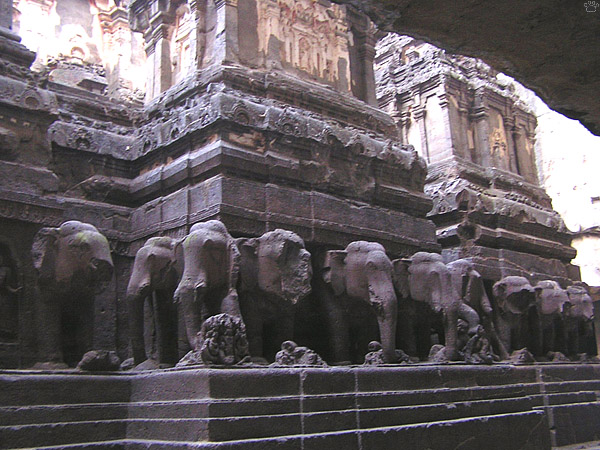
Kailasa Temple, Ellora Caves. The elephants are life-size and, like the rest of the temple, were carved out of solid rock.
Part 13. Caves of Maharashtra
The state of Maharashtra is famous for ancient complexes of artificial caves, carved in basalt rocks of Deccan Plateau. The two most interesting are Ellora and Ajanta Caves, both near the city of Aurangabad. Although of different age, they are somewhat similar in planning in design.
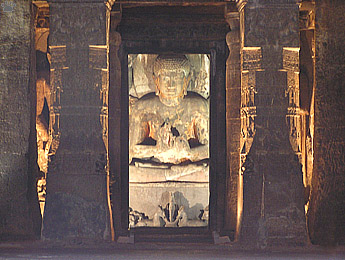
Buddhist cave, Ellora. |
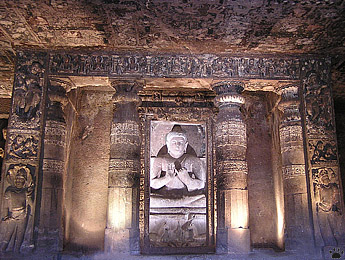
Buddhist cave, Ajanta. |

Buddhist cave, Ellora. |
Art experts find Ajanta a bit more interesting, but I liked Ellora more, in part because I got there at dawn, before the tourist hordes. Tourism industry at Ajanta is way too organized, with stupid restrictions so typical for Indian monuments and parks. |

Buddhist cave, Ajanta. |

Entrance to a Hindu cave, Ellora. |

Sacred bull statue in a Hindu cave, Ellora. |
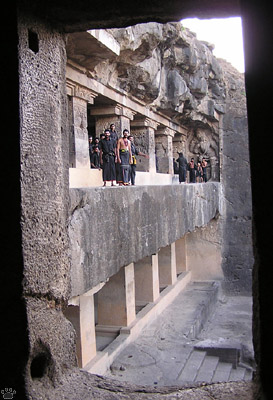
Facade of a Hindu cave, Ellora. |
34 caves of Ellora form three groups: Buddhist (c. 600-800), Hindu (c. 600-900), and Jain (c. 800-1000). Still a pilgrimage site, they were found and damaged by Muslim invaders trying to eradicate idol worship as the Quran requires. |
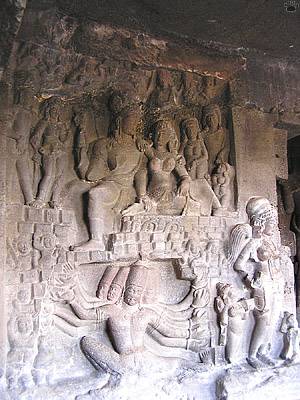
Inside a Hindu cave, Ellora. |

Pilgrims at a Hindu cave, Ellora. |

Temple carved from the rock at the entrance to a Hindu cave, Ellora. |
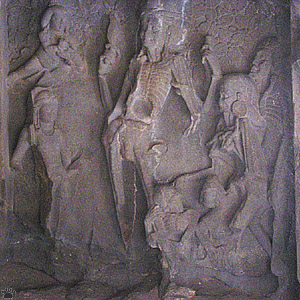
Dance of Death, Ellora. |
The Hindu caves at Ellora are the most impressing, although the latest Buddhist ones tried in vain to copy their vivd imagery and lively style, just before Buddhism vanished from most of India. |
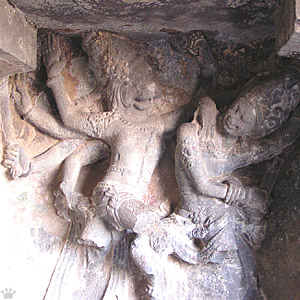
Gods in a dance competition, Ellora. |
 |
 |
| Cave wall carvings, Ellora. |
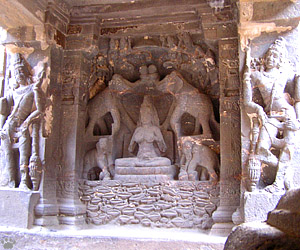
Detail, Kailasa Temple, Ellora. |
The most amazing sight in Ellora is the colossal Kailasa Temple. This stunning masterpiece was not built, but cut from solid rock in AD 760. |

Rose-ringed parakeets (Psittacula krameri), Kailasa Temple. |

Part of Kailasa Temple, Ellora.
|

Inside a cave, Ajanta. |
All 28 caves at Ajanta are Buddhist. They were built in 200 BC - AD 650, then abandoned. A British hunting party accidentally found them in 1819. The Muslims never had a chance to damage the cave art, but the elements did. |
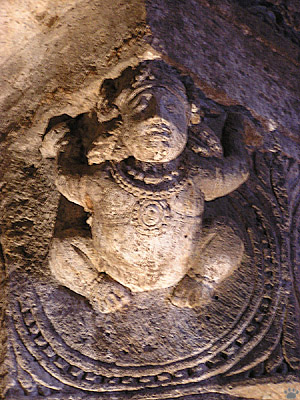
Small sculpture in a cave, Ajanta. |
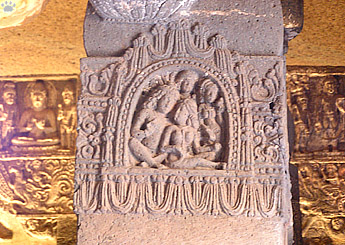
Cave carvings, Ajanta. |
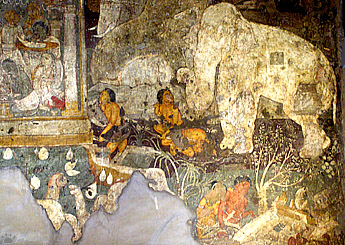
Tempera, Ajanta. |

Tempera, Ajanta. |
These caves have numerous frescoes (or, more accurately, temperas), poorly preserved but beautiful. Alas, the authorities ban flash photography (somewhat reasonably) and videotaping (out of fear that someone might shoot a commercial video for free - common paranoia in the country). |
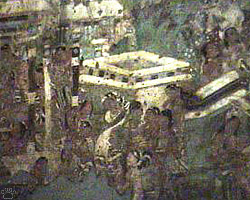
Tempera, Ajanta. |
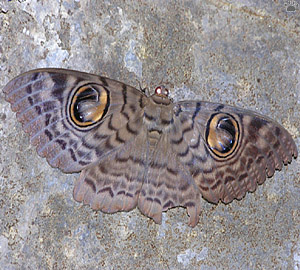
Noctuid moth, Ellora Caves. |
The caves, particularly those at Ellora, are inhabited by numerous creatures, from tiny mites to birds. The most numerous are tomb bats. |
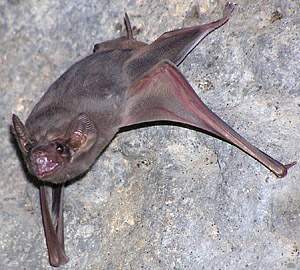
Tomb bat (Taphosous longimembris), Ellora Caves. |
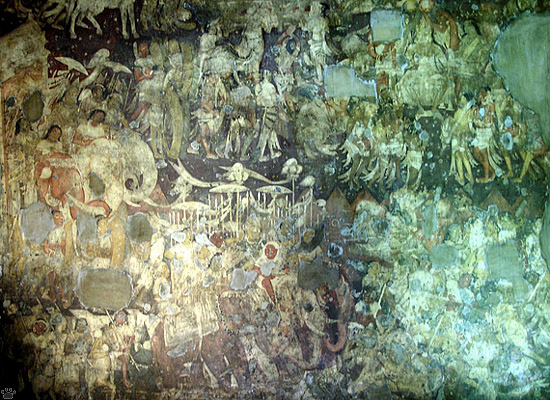
Tempera, Ajanta.
|
Part 14: Temples of Orissa
Back to Part 12
Home
|